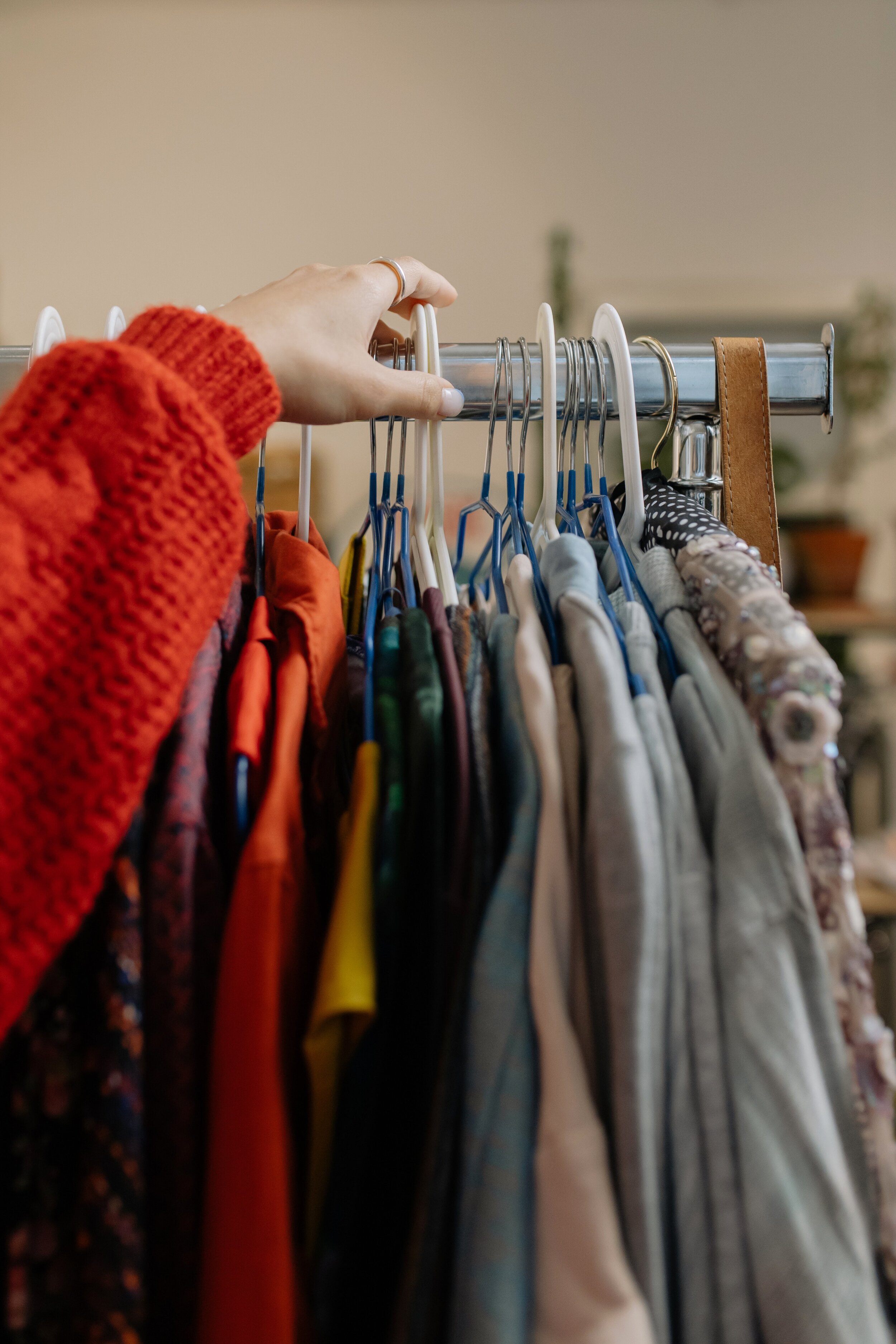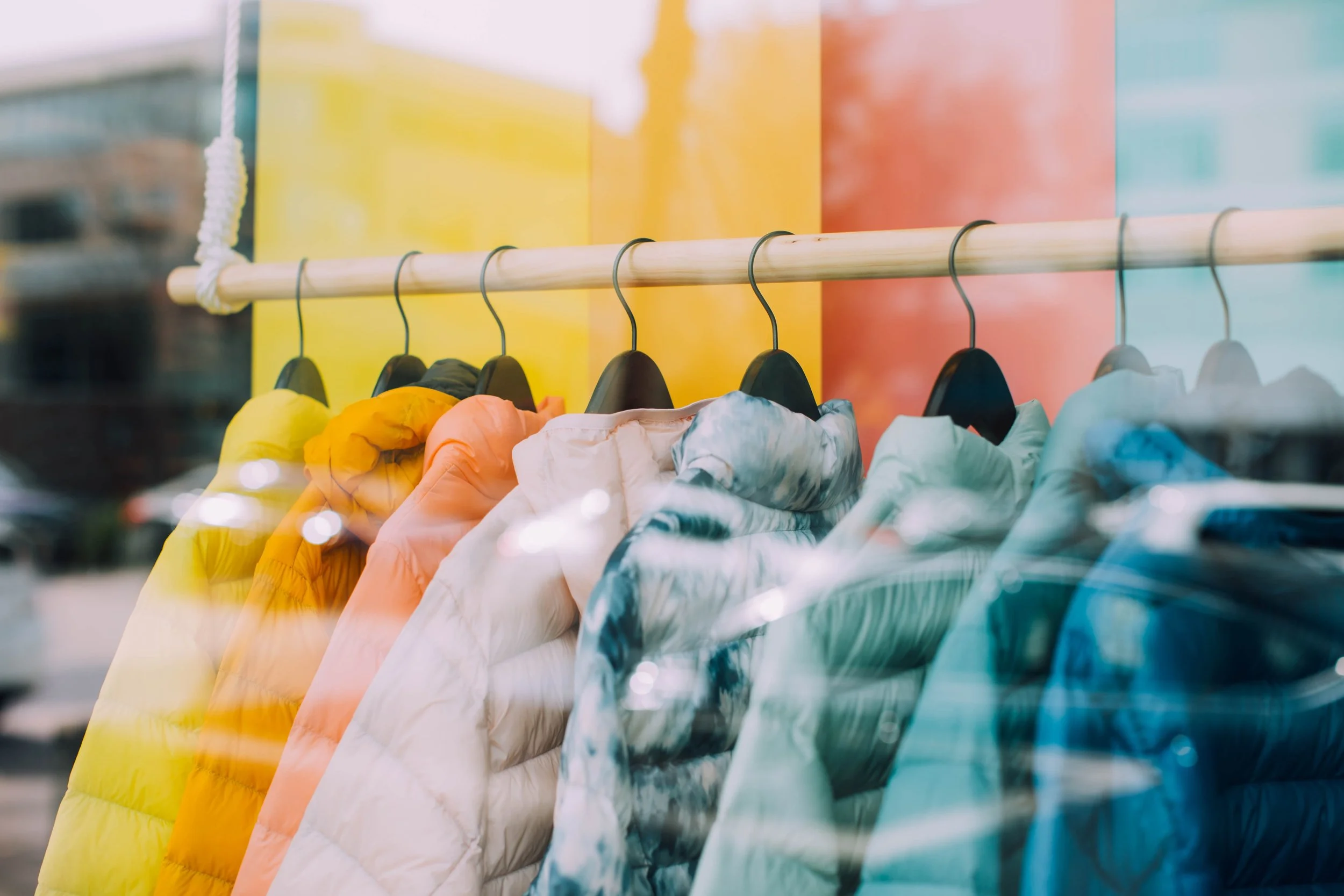Six Different Ways To Start Shopping Second-Hand

6 DIFFERENT WAYS TO START SHOPPING SECOND-HAND
Cover photo by cottonbro from Pexels
When it comes to shopping second-hand clothes, our choices in where to shop and buy from are ever-diversifying as businesses and companies pick up on the value of the resale industry. With concerns regarding the environment/sustainability and thrifting becoming more reputable and trendy compared to even five years ago, there’s no better time than now to learn about all the ways you can shop second hand. This article is your handy guide to shopping second hand clothes, the differences between certain second-hand retailers, along with some tips and tricks to make the most of your experience.
1. Big Box Retail Chain Thrift Stores
Stores such as Value Village, Goodwill, or Salvations’s Army are for-profit chain stores that sell second-hand clothing with multiple locations across the country. Generally these large chain stores receive their items via local donation, and will separate those that are sellable from those that are not. These stores have racks and racks of clothes, jewelry, shoes, books, appliances, etc, and are geared for the second-hand shopper looking for a bargain or who is willing to spend time to find treasured picks.
Tips and tricks: Make sure to sign up for the membership at these locations. Memberships often include discounts on certain days, coupons being sent directly to your email, and may allow you to earn points towards discounts. During Covid-19, these stores also may not be allowing the usage of the change stores, so we’d recommend bringing a tape measurer to make sure the clothes you thrift will fit you before purchasing. And if you couldn’t find what you were looking for, remember that these chains often have more than one store in your city- try checking out their other locations!
Photo by Girl with red hat on Unsplash
2. Consignment Stores
Consignment stores are often stores with curated racks of clothing, accessories, and shoes. Their business model differs from chain thrift stores- while chain thrift stores stock is made up of donations, the items at consignment stores are purchased by the store from sellers looking to get rid of extra clothing. Some stores may offer cash or store credit up front to these sellers, while others may stipulate that the seller will get a percentage of the item’s final sale once it is sold. Because these stores personally hand pick what they want to sell, often according to seasonal and current trends, the store selection is often trendier and higher quality than chain thrift stores. While quite a few of your local consignment stores are small-owned businesses, there are large chain consignment stores, such as Plato’s Closet.
Tips and tricks: Consignment stores are for the second-hand user who would like to thrift from a curated selection of clothes, and who may not have as much time on their hands to look through the racks at a chain thrift store. As mentioned above, signing up for the membership and email alerts of possible sales and discounts is always a smart idea.
3. Indie Thrift/Vintage Stores
Small, independant thrift and vintage stores are some of the best places to find unique and one-of-a-kind pieces you can’t find anywhere else. The selection in these stores are often hand-curated and purchased by the owner of the store. There’s also a certain whimsicality to different independent stores- compared to large chain thrift stores or consignment stores, these indie stores tend to have a personality and charm of their own.
Tips and tricks: Striking up a friendship with the owners or the employees of the store, particularly the more you frequent these stores is always a good idea- they may tell you more about the history of the piece you’re purchasing, or set aside a particular item for the next time you stop in. Of course, not every owner or employee may do this, but it doesn’t hurt to be nice, right?
For these indie stores, make sure to do some research on what you’re looking for before going. Many boutiques and stores have different items depending on their owners/employees interests- one store may only have vintage clothing of a certain era, while another may have more modern clothes.
Photo by Kaylin Pacheco on Unsplash
4. Online Apps- Depop, Grailed, etc
Online apps such as Depop and Grailed allow users to sell their own clothes to other users on the app, and the purchased clothes are shipped directly to your house. This allows sellers to make a bit of extra money from their own closet, or to use the app as a second stream of income. For buyers, the appeal is the online aspect- scrolling through these apps and the sheer amount of clothing and accessories is essentially like working your way through a chain thrift store, but online. Often these online apps are the quickest way to thrift trending pieces, as sellers tend to be on the pulse of trends. Different apps, just like physical stores, also tend to have different focuses and trends. Grailed is the app for those looking to purchase second-hand streetwear luxury clothing, whereas Depop may be the better app for those looking to buy trendy women’s wear.
Tips and tricks: While the online aspect of these apps are convenient, it’s also much easier to be scammed or simply purchase clothes that don’t fit. If you’re unsure of the fit or quality of an item, asking the seller for the measurements or for more pictures never hurts! Additionally, something to look out for on these apps is drop shippers- sellers advertising popular, trendy clothes in multiple sizes, and advising users to wait multiple weeks for the item. These are in fact drop shippers who purchase the clothes once you have purchased ‘from the seller’ from a cheap source such as SHEIN or Amazon.
5. Online Consignment Websites- The RealReal, Turnabout
Similar to online apps, online consignment websites take the consignment store model online. Some Canadian consignment stores include The Upside from Calgary and Turnabout (which also has physical retail stores based in Vancouver). Some more well-known american-based stores also include The RealReal and thredUP. These websites are often curated with luxury pieces, verified by the website’s employees, which is another bonus for purchasers- a third party has already performed quality and/or authenticity checks on these items.
Tips and tricks: When shopping through these websites, look at the sale section and search pieces from lowest to highest. You’d be surprised at the amount of quality, luxury pieces you may find that cost as much as a brand new item from higher end stores such as Aritzia.
6. eBAY
Frankly, I was hesitant to share this holy grail of online second hand shopping, but being selfish never got anyone anywhere. eBAY is one of the absolute best websites for finding hidden gems for cheap. The site is full of vintage jewelry, clothes, shoes and accessories, as well as cheap trendy clothes with some up for auction. What does this mean? Some sellers may put an item up for bidding, rather than allowing users to purchase it directly, which both leads to competitive bidding and a much cheaper price than you might have paid if you win the auction. While trawling through EBAY requires patience, you can get some of the best bargains there if you take your time.
Tips and tricks: The word search function on eBAY can be finicky, so if you can’t find exactly what you’re looking for, try phrasing your key words differently or trying out a similar keyword. While the amount of items for sale and auction can be overwhelming, use the site’s filters to your advantage- for example, I prefer clicking Canada only to avoid high shipping and custom fees.
Other, Miscellaneous Places to Shop
Facebook Marketplace, Kijiji, and Craigslist are all examples of other websites where you may be able to purchase pre-loved clothes. While the above different mediums and areas of where to shop are great places to start, there are always plenty of other avenues as well. Hidden gems are often abundant on resale places such as Facebook Marketplace and Kijiji, with the detriment of not being able to filter them as well as you might be able to on eBay. Think to Instagram as well- there are several small second-hand thrift accounts, and your favourite influencer may well be selling some of their pre-loved clothes or pr items on a separate handle, a great way to purchase trendy clothing at a discounted price.
Tips and tricks: With sites such as Facebook Marketplace and Kijiji that are less regulated than apps and websites, it’s always a good idea to be safe when meeting up with sellers. Make sure to choose a public space, and be ready to e-transfer or give your seller cash after they’ve given you the item in order not to be scammed.
Now that you’ve read to the end of this article, you’re ready to shop all the different ways one can source and find pre-loved clothing. You may find the more you shop second hand and solidify your style that you may gravitate to only one or a few ways of buying second-hand on this list, and that’s perfectly okay! Each option has different pros and cons, and figuring out how you prefer to shop is part of the fun of the resale industry. Have you tried out any of the above ways to shop? Are there any tips and tricks we missed?
Minh Truong is from Vancouver, BC and is currently finishing up her Communications degree at Carleton University. When not writing, reading, or drinking a chai latte with oat milk (lactose intolerants unite!), you can catch her annoying her very handsome cat. | IG: @minhtruong_







